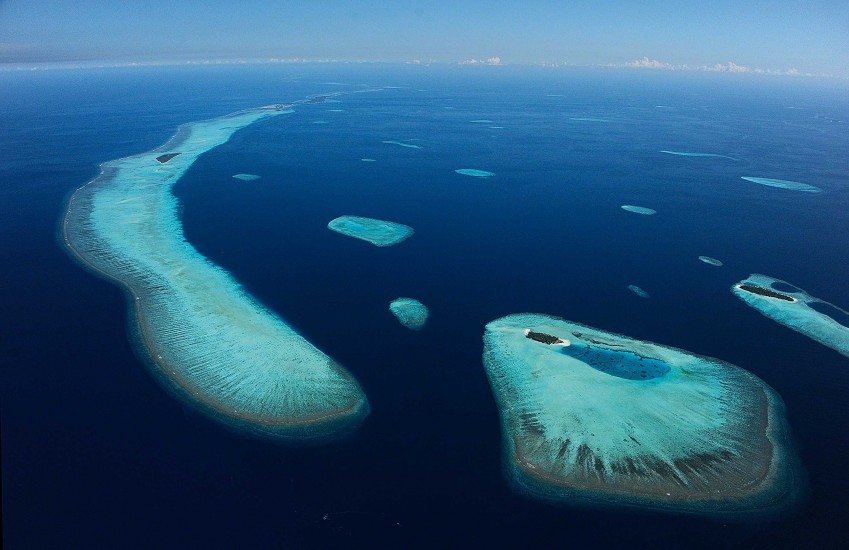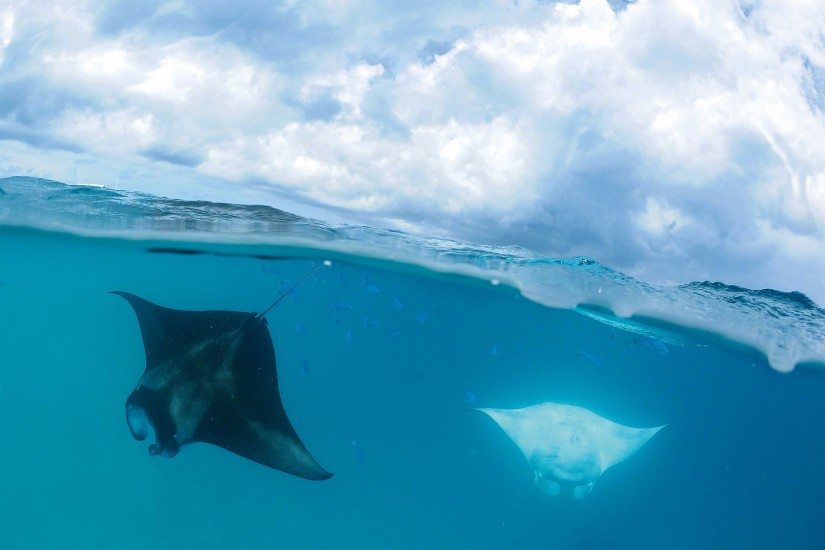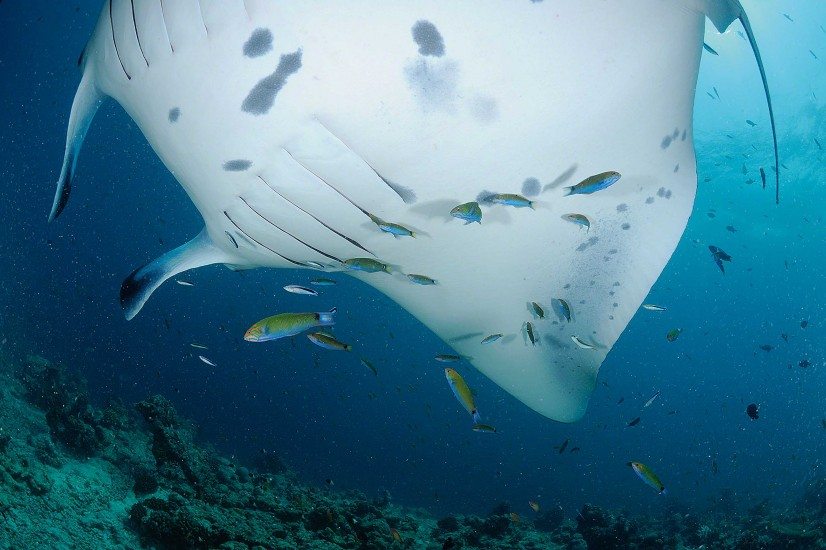Devil Fish
Manta Rays of the Maldives
Chief executive of Manta Trust Guy Stevens has spent a decade unravelling the lives of the manta rays that inhabit the coral reefs of the Maldives. Here is some of what he has seen and learnt.
Photo by Thomas Peschak
People often ask me why I decided to study manta rays. Why would a British marine biologist move halfway around the world to devote a decade of his life to unravelling the lives of the manta rays that inhabit the coral reefs of the Maldives? It is a good question, a seemingly simple question, yet one which I had not truly stopped and taken the time to consider until I was first asked many years ago. It is a question I still find difficult to answer satisfactorily with words today. Certainly, manta rays are beautiful creatures: their grace and inquisitive nature is captivating; they engage and stir my natural curiosity like no other marine creature, driving my desire to protect and learn as much about these poorly studied animals as possible. Yet to me these words never seem to fully express my passion, or satisfactorily project the empathy and connection I feel towards manta rays and their marine world. This is why my favourite answer does not require words, but simply an introduction between those who wonder why, and the manta rays themselves. For me, manta rays are the embodiment of nature’s majesty, they are the vehicle which draws people through the looking glass, opening eyes and minds. They captivate and connect people to our oceans, symbolising what is at stake if we choose not to respect and protect our natural heritage.
In 2005 I founded the Maldivian Manta Ray Project (MMRP) which is now one of the longest running manta ray research and conservation initiatives in the world. The MMRP was formed with a view to collecting long-term, robust data records on manta rays throughout the Maldivian archipelago to further their conservation. In addition to collecting data on the mantas encountered, the MMRP also collects data on environmental and climatic factors as well as tourism and human interactions, all of which influence the manta population.
Family history and distribution
Like all cartilaginous elasmobranchs manta rays and their close relatives the mobulas have a skeleton comprised of flexible, fibrous and light cartilage as opposed to the dense bony skeletons of the vast majority of all other fishes. A close relative of all sharks and rays, mantas must constantly keep swimming forward in order to ensure a steady supply of oxygen-rich water flows over their gills; they can never stop to sleep or rest on the seabed.
The first rays appeared in the oceans approximately 170 million years ago, radiating from shark-like ancestors but adapting to a more benthic mode of life. The flattened body shape of rays is essentially a squashed version of the archetypal shark, with internal physiology very similar to that of their shark cousins. It was from these bottom-dwelling rays that the ancestors of today’s pelagic mantas and mobulas evolved, taking to the open water around 20 million years ago.
The Manta Trust
Having started out in the Maldives, the Manta Trust is now active in about 16 countries worldwide promoting the conservation of manta and devil rays and their habitat through research, awareness and education. Three of its current major operations are the Global Mobulid ID Project, which aims to provide a taxonomic, morphological and genetic identification guide to manta and devil rays; the collection of data about ray landings in India, which will inform conservation management in that country; and the Indonesian Manta Project, which works to promote an appreciation of manta and devil rays among local people.



















